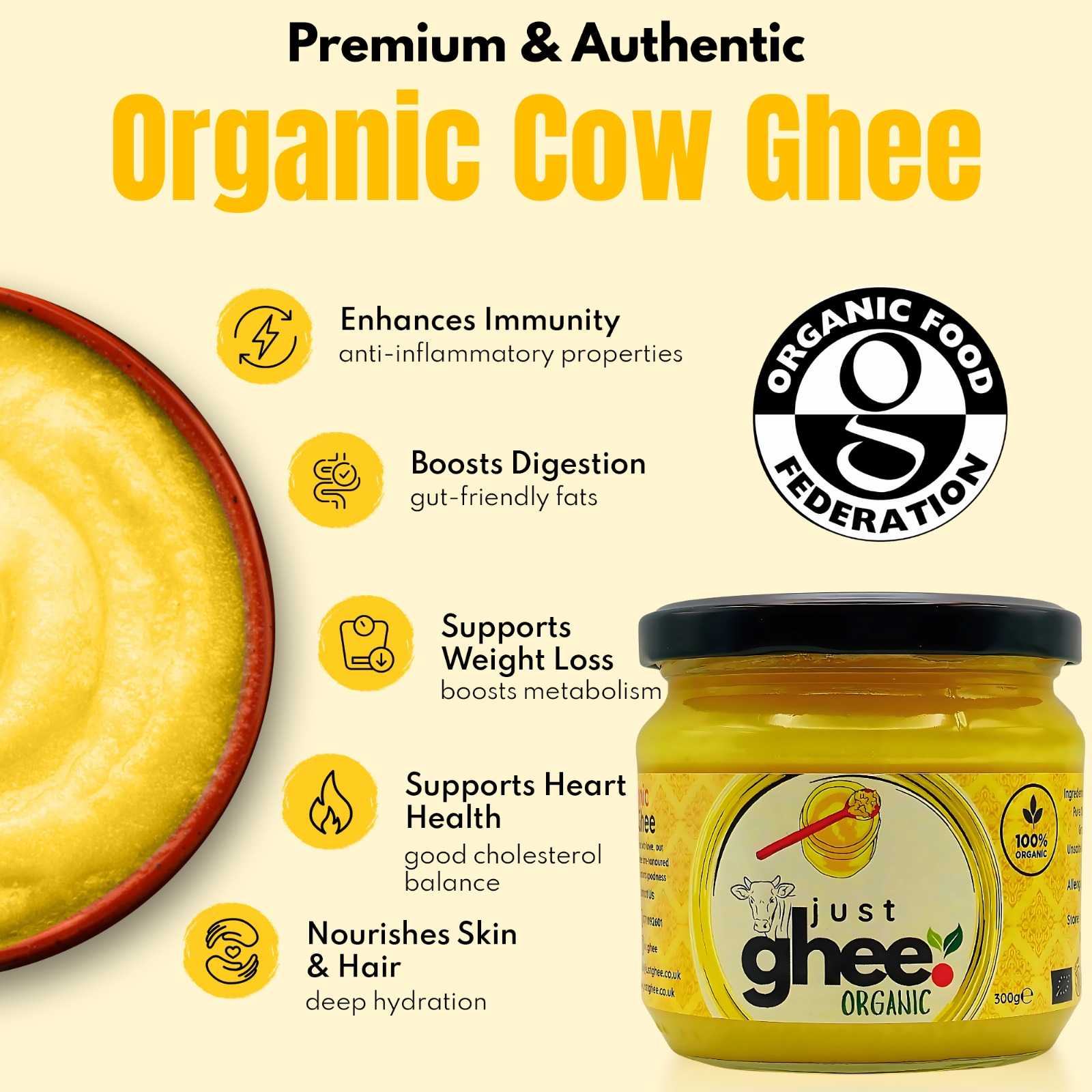In the kitchens of the UK, where health-conscious cooking meets a rich mix of culinary traditions, organic ghee is becoming a popular ingredient. But what exactly is organic ghee, and why is it gaining favour among both beginners and experienced cooks? This beginner’s guide will explain organic ghee, explore its history, walk you through its production, and highlight its many benefits for people in the UK. Whether you’re looking for lactose-free options, nutrient-rich fats for your keto or paleo diet, or just keen to add something special to your meals, organic ghee opens up a world of possibilities. At Just Ghee, we specialise in premium, handcrafted organic ghee, and we’ll introduce our range to help you get started.
Understanding Ghee: The Basics
Ghee, often called clarified butter, has been a kitchen staple for thousands of years, particularly in Indian and Ayurvedic cooking. It is made by simmering butter gently to remove water, milk solids, and any impurities, leaving behind pure butterfat with a rich, nutty flavour. Unlike regular butter, ghee has a much higher smoke point (around 251°C), making it ideal for cooking at high heat such as frying, sautéing or roasting without burning or producing harmful compounds.
What makes organic ghee stand out?
Organic ghee in the UK comes from butter produced by cows raised on organic farms, strictly free from pesticides, synthetic hormones, antibiotics, and genetically modified organisms (GMOs). In the UK, this means following stringent standards set by bodies like the Soil Association or EU Organic regulations. These cows are usually grass-fed, grazing on natural pastures, which improves the ghee’s nutritional content with higher levels of omega-3 fatty acids, conjugated linoleic acid (CLA), and fat-soluble vitamins including A, D, E, and K.



